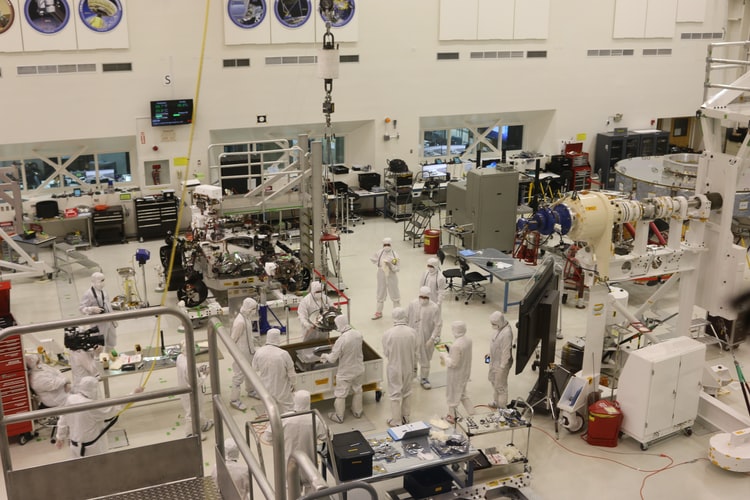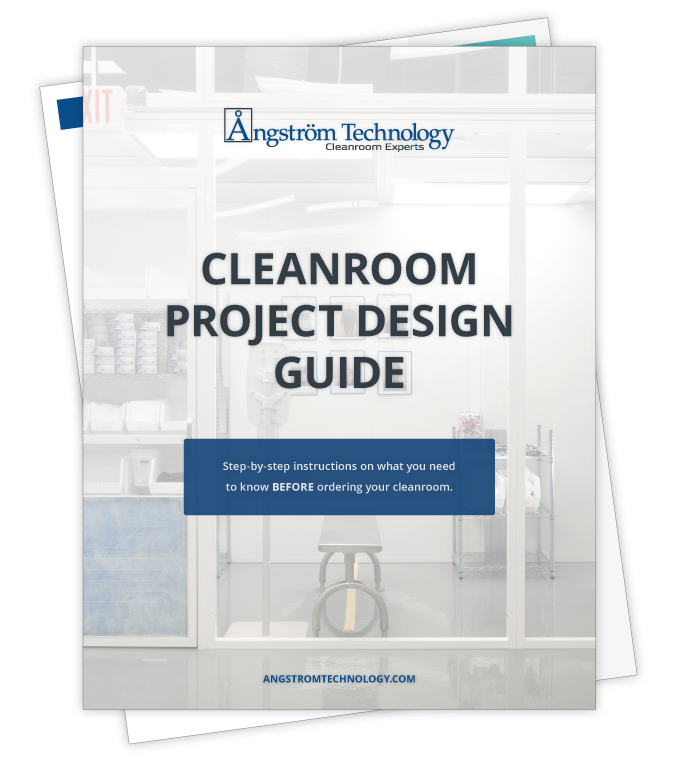
Static Control for Medical Device Cleanrooms: Everything You Need to Know
Even with a powerful HVAC system, a multi-stage HEPA filtration process, and thorough cleaning procedures, contaminants can still threaten a controlled cleanroom environment. Static electricity is common everywhere we live, but in a cleanroom it can be unpleasant, detrimental, and even dangerous. How can the dangers of static affect your application? How can these problems be avoided? Let’s explore static electricity in medical device cleanrooms, and how to build static control into your cleanroom design from the ground up.
Why Does Static Matter?
Static electricity is caused by an imbalance of positive and negative charges on a surface or object. These charges accumulate until they’re neutralized or discharged. It’s a common phenomenon in all parts of the world and is usually harmless. In a cleanroom, however, the buildup of static electricity can be dangerous to products and employees.
Static electricity in cleanrooms can present dangers to any industry, but in medical device manufacturing, assembly, and packaging it could have disastrous, life-altering consequences. Three ways static can influence with medical device cleanroom safety and efficiency are by:
Attracting Contaminants
Static causes contaminants to adhere to charged surfaces through electrostatic attraction (ESA). ESA can occur in many stages of product development and assembly but is perhaps most dangerous in packaging. Particularly if products are packaged using plastic, they can carry charges that are not neutralized during shipping. Once opened, contaminants are attracted to the device, causing it to fail or be rejected.
Inhibiting Equipment
Static that accumulates during product development can interrupt important processes. If parts of the device are repelled or attracted to machinery or equipment it can contaminate them or cause a slowdown in operations, reducing your cleanroom’s efficiency and increasing operational costs.
Generating Charges
Static charges that accumulate on surfaces, equipment, personnel, and products that are not properly discharged or neutralized can interfere with electronics or hardware you use to create devices or the devices themselves, causing them to malfunction or fail. Static charges can also create electric shocks, which, while not likely to cause extreme bodily harm, could cause involuntary movement which could lead to accidents or damage to the employee, delicate equipment, or devices.
Managing static effectively is crucial. Even when the effects of static electricity in medical device cleanrooms are not threatening to the devices you develop, assemble, or package, they may interfere with efficiency and affect operational costs of your facility. How do you control static in your cleanroom? Many potential problems can be addressed in your cleanroom design and then managed with specific static control cleanroom supplies.
Static Control Methods in Cleanroom Design
Cleanroom design can incorporate methods to conduct, dissipate, or neutralize static electricity.
Conduction
In conduction, materials or surfaces that present little resistance to the flow of electrons are used to guide charges to the ground safely. Conductive materials direct charges away from where they can damage products or attract contaminants.
Dissipation
Dissipation, similar to conduction, is the flow of charges to the ground, but occurs more slowly and in a more controlled manner. Materials that allow electrostatic discharge through dissipation can be used in flooring, wall materials, and furniture. ESD products discourage the buildup of static electricity to protect products, employees, and cleanroom operations.
Neutralization
To neutralize static, the imbalance of charges must be corrected through adding electrons to positive charges or removing electrons from negative charges. Air ionization is one method more medical cleanrooms are adopting to neutralize air and surface charges.
An air ionization system adds positive and negative ions to the atmosphere of your cleanroom, directing them with a focused nozzle or blower. The ions are attracted to charged surfaces of the opposite polarity, balancing and effectively neutralizing the surface. Air ionization systems can be incorporated in key areas of production of medical devices, as well as at entry points of the cleanroom to limit the introduction of charges into the cleanroom by employees.
Static Control Equipment Cleanroom Supplies
To control static electricity and prevent harmful effects including damage to your equipment, employees, and products, anti-static cleanroom supplies are used to manage static or avoid the generation of excess charges. These could include:
- Air showers
- Ionizing blowers
- Sticky mats to collect contaminants
- ESD safe furniture such as chairs and workstations
- ESD garments, gloves, and footwear
- ESD monitoring equipment
Static control is also important for cleanrooms using fine electronics and sensitive or flammable substances. In the medical industry the production of medical devices might be the application most threatened by static electricity. With intentional cleanroom design and static control cleanroom supplies, you can protect your products and people, encourage efficient operation, and avoid the potential problems of escalated costs or failed products.
Think you need static control in your medical cleanroom, but not sure where to start? Angstrom Technology can design and build cleanrooms to your specifications using conductive flooring, ESD materials, static control equipment, and more. We have solutions to avoid static buildup and protect your work and employees. Get in touch with our team to learn more.





